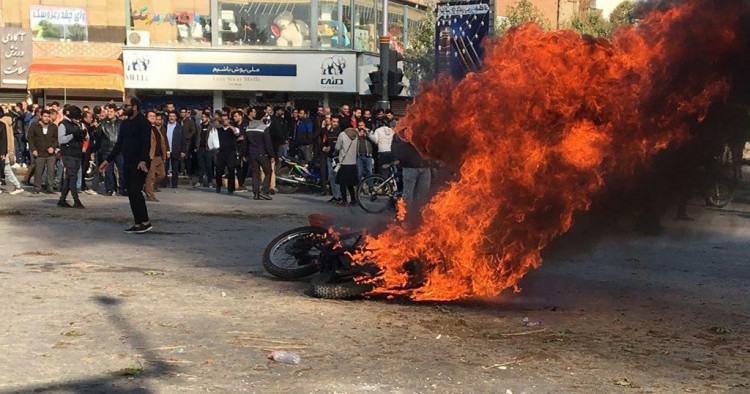On the surface the latest protests in Iran appear to be not that different from the previous ones in late 2017 and early 2018. In reality, however, things are quite different this time around, and the Iranian authorities are deeply alarmed. The last nation-wide protests in 2017-18 were first instigated by the hardline faction around the Revolutionary Guards with the aim of undermining the government of Hassan Rouhani. It took days for the instigators to realize they had unleashed popular anger that they could not control and that would target the entire regime, including Ayatollah Ali Khamenei and the hardline camp. This time, no regime faction appears to have instigated the protests, and by most accounts they seem to have been spontaneous. Moreover, during the last set of protests, it took days before the demonstrators turned their anger against Khamenei and the Islamic Republic more broadly. This time, however, Khamenei and the regime as a whole have been the primary target from the very beginning.
This explains why the regime has quickly come together to show unity and not allow for internal differences to weaken their response to the protests. The use of deadly force so early on by the security forces suggests a deep sense of fear inside the regime, and the elite Revolutionary Guards have been forced to take the lead in confronting the protesters. Taken together, these signs point to the mobilization of a new kind of political opposition in society against the Islamic Republic, which is no doubt escalated by the painful impact of sanctions. The use of deadly force and other forms of intimidation are aimed at discouraging people from joining the protesters. While a sudden hike in the price of fuel may have been the spark for the protests, the root causes are far more fundamental and are about an Islamist regime that has very little legitimacy left in the eyes of the Iranian people.
Alex Vatanka is a Senior Fellow at MEI who specializes in Middle Eastern regional security affairs with a particular focus on Iran.
Photo by AFP via Getty Images
The Middle East Institute (MEI) is an independent, non-partisan, non-for-profit, educational organization. It does not engage in advocacy and its scholars’ opinions are their own. MEI welcomes financial donations, but retains sole editorial control over its work and its publications reflect only the authors’ views. For a listing of MEI donors, please click here.













